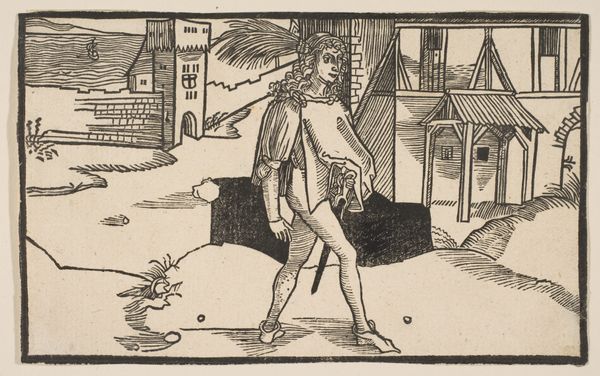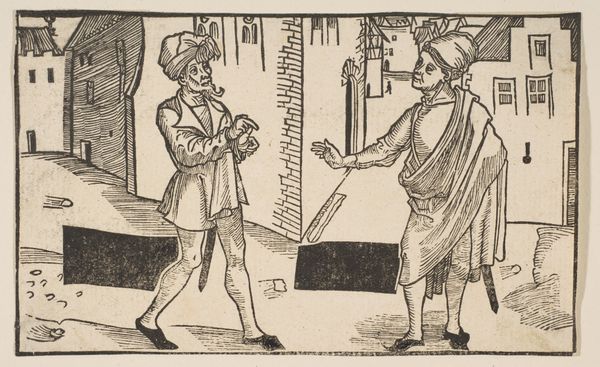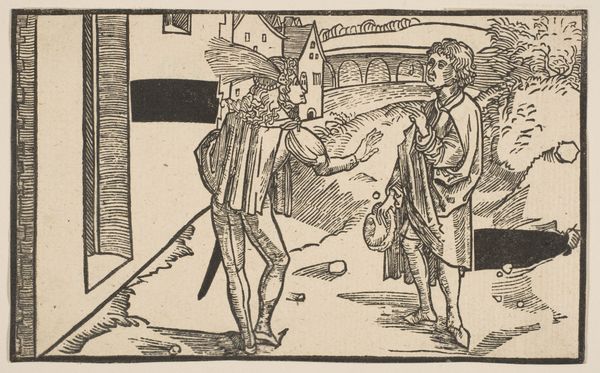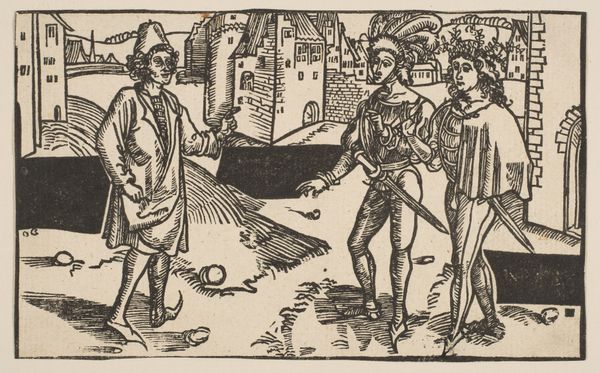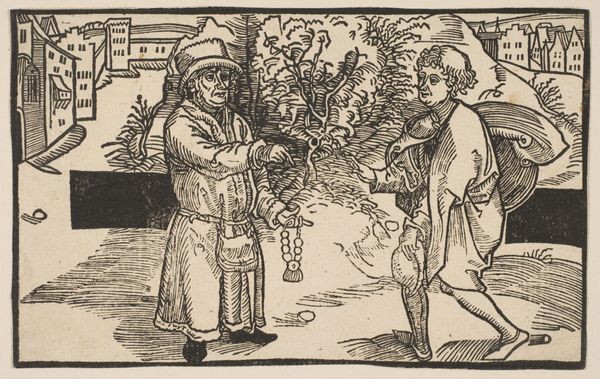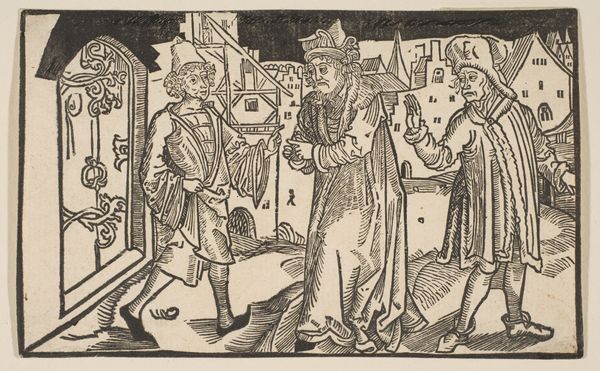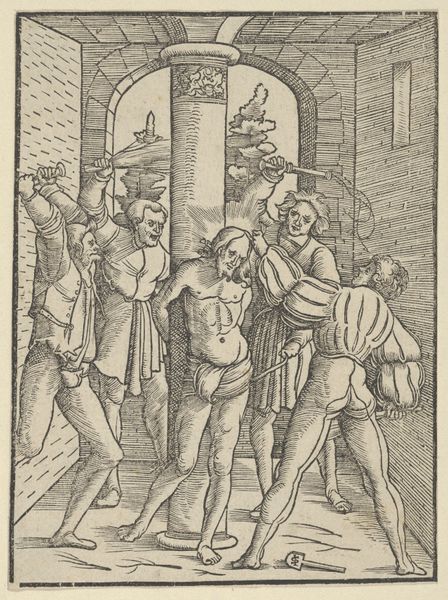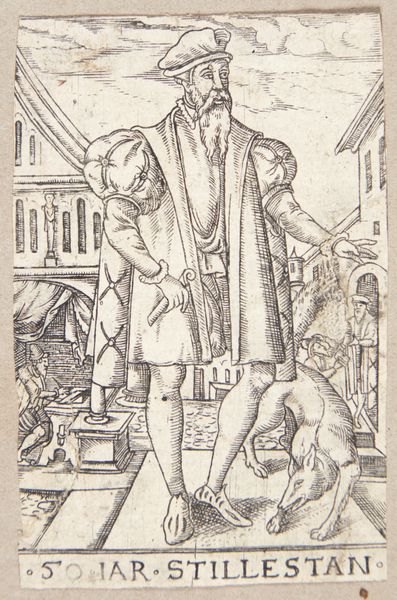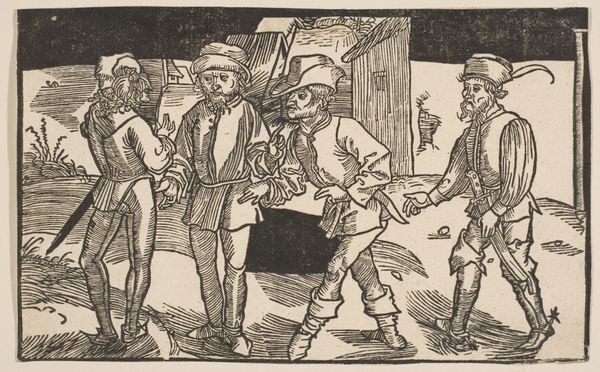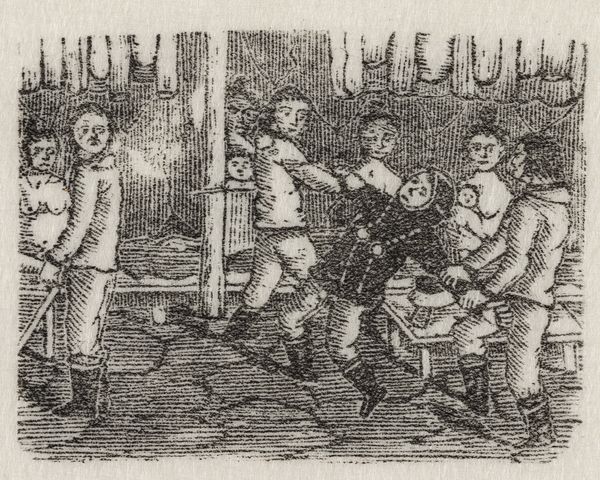
Phormio, from The Comedie of Terence, 19th century reprint 1485 - 1528
0:00
0:00
drawing, print, woodcut
#
drawing
# print
#
figuration
#
woodcut
#
men
#
genre-painting
#
northern-renaissance
#
street
#
building
Dimensions: sheet: 3 x 5 5/8 in. (7.7 x 14.3 cm)
Copyright: Public Domain
Curator: This is Albrecht Durer's "Phormio, from The Comedie of Terence," a woodcut print created between 1485 and 1528. It’s currently held at the Metropolitan Museum of Art. Editor: My immediate impression is the sharp contrast—the figure really pops against that stylized background, almost like a theatrical stage set. And the line work gives it an intense, slightly crude energy. Curator: Indeed, the high contrast is very striking. Note the figure's pose and the meticulous rendering of his clothing and the details of the buildings. It's exemplary of Northern Renaissance figuration. How does that materiality inform your read? Editor: I’m struck by the labor involved. The cutting of the wood block, each line a physical act repeated across potentially hundreds of prints. It bridges the gap between the artist's initial idea and its widespread dissemination. Also, notice how the texture of the paper adds to the material experience. Curator: Certainly. Consider the structural aspects: The composition directs the eye along the receding lines of the road, anchoring us to the character. The hatching creates form but also functions as a structural element to build the perspective. Editor: Right. The use of parallel lines to suggest depth feels so deliberate. It’s interesting to think about how these choices, driven by the medium, affect how stories were spread and consumed. Curator: Dürer manipulates pictorial space in compelling ways to support both textual interpretation and artistic vision. Semiotically, this particular scene likely resonated deeply with its intended audience. Editor: Yes. The social context is crucial. Prints like these made art accessible beyond the elite, shifting cultural influence through reproduced images. You could touch, own, and share this image and its story so, its message could easily be circulated throughout society. Curator: Absolutely. By deconstructing both image and method, we see that meaning resides in both design and disseminination. Editor: For me, looking at this print, the power lies in understanding that relationship between manual labor, accessible art, and evolving cultural discourse.
Comments
No comments
Be the first to comment and join the conversation on the ultimate creative platform.
